Compass Travel Vietnam
Only 1km from the Lung Cu flagpole, there is a cultural village known as a fairy village in Ha Giang
The village with the special name Lo Lo Chai is known as the fairy village at the top of the country because of its idyllic and rustic beauty, but no less poetic than in the comics.
When asked about Ha Giang tourism, most tourists will answer that the most famous destination for them is the Nho Que river, which is the terraced fields in Hoang Su Phi or Dong Van, Meo Vac.
However, few people know that, in the northernmost part of the country, there is a small village, known as a fairy village in real life. The village has a very special name, Lo Lo Chai village.
The village is visited by many curious and interested tourists not only by its name but also by the natural scenery as well as the cultural life of the people here.

Lo Lo Chai village seen from afar.(Photo by VOV)
A special place, special name
First of all, the very special geographical position of the village. Lo Lo Chai is located at the foot of Dragon Mountain, in Lung Cu commune, Dong Van district, Ha Giang province, only about 1km from Lung Cu flagpole. Because of this, the village is also often called the village where the head of the country is located.
To get to Lo Lo Chai, visitors will have to go through 150km of pass road from Ha Giang city center to Dong Van rock plateau. After that, continue to go a rough and difficult pass, one side is the cat ear mountain range, the other side is the cliff leading down to the deep valley.
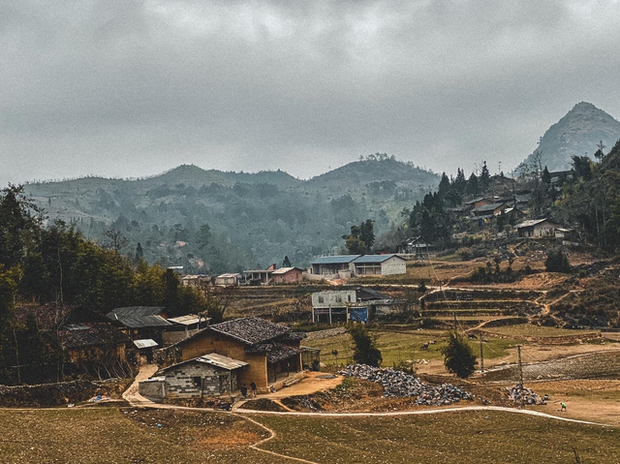
Kim Kim’s photo
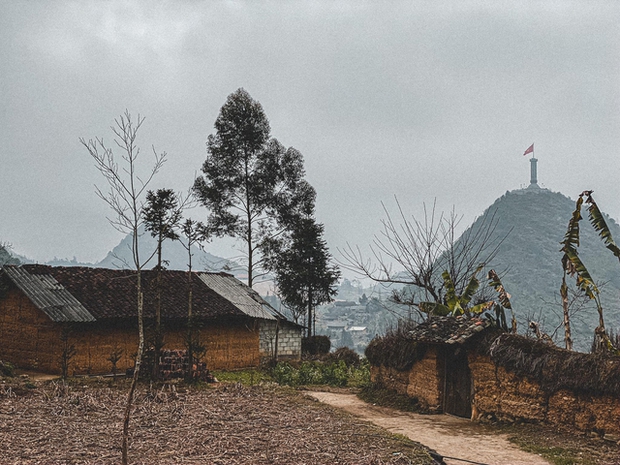
The village is located at the foot of Dragon Mountain, only 1km from Lung Cu flagpole.The flagpole can be seen from any position in the village.(Kim Kim’s photo)
Here, the people living here are mainly ethnic minorities, the Mong, the Dao and the Lo Lo, of which 90% are the Lo Lo people. That may also be the reason why the name Lo Lo Chai village was born.
Bold traditional ethnic culture
Unlike other places, people in Lo Lo Chai still keep almost all the national cultural values in their daily lives. From house architecture, costumes, professions, traditional festivals, or other elements of material and spiritual life.
Arriving in the village, the first image visitors will encounter will be the road with two sides of orange chrysanthemums growing closely, leading to houses with tiled roofs, surrounded by rows of rows of flowers. stone fence, brown earth wall. On the rafters, corns are dried in neat rows, along with peaches or broccoli in front of the door.
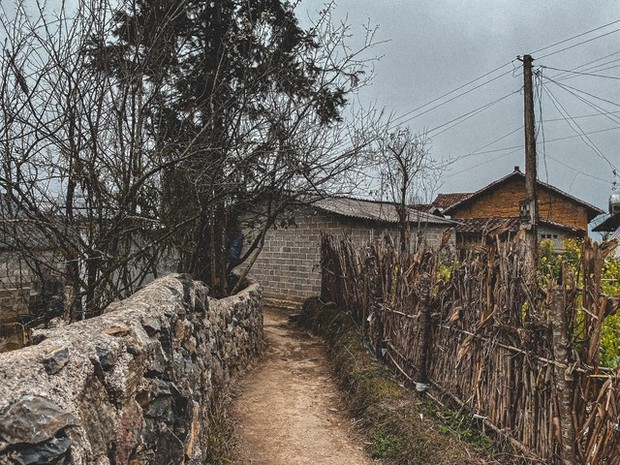
Kim Kim’s photo
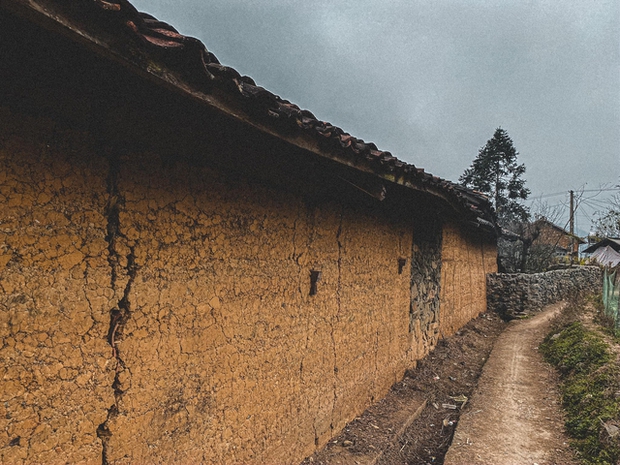
The road leading to the village.(Kim Kim’s photo)
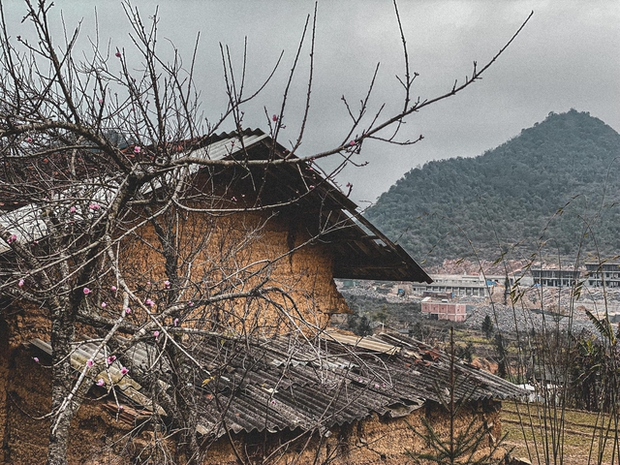
Traditional houses with tiled roofs in Lo Lo Chai.(Kim Kim’s photo)
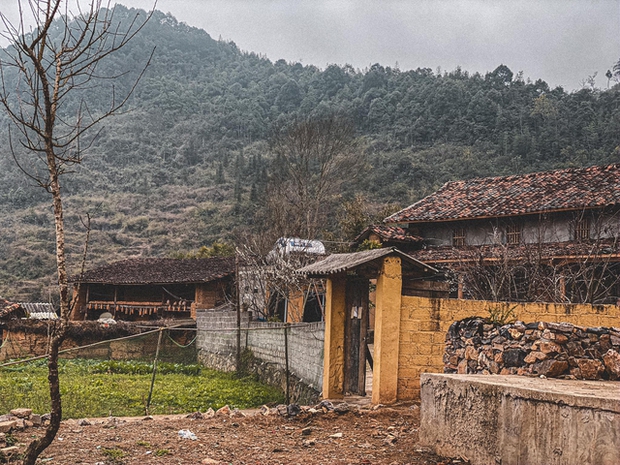
In the distance is a house with lots of corn hanging from the rafters.(Kim Kim’s photo)
Next, you will see images of people in Lo Lo Chai, women and children in colorful dresses and hats, walking on the village road. People here still maintain the habit of wearing traditional brocade costumes every day, not only during holidays and Tet.
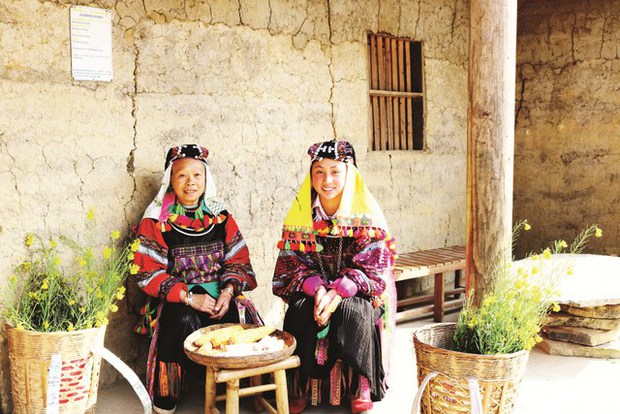
People in Lo Lo Chai still maintain the habit of wearing colorful traditional costumes every day.(Photos of National Newspaper)
Their main occupation is still farming. They work to maintain a self-sufficient lifestyle, growing rice, potatoes, corn, and cassava for their daily meals. In addition, other occupations such as carpentry and sewing are also maintained by some families with a long tradition.
Not only that, traditional festivals such as the worshiping ceremony to the forest god, the new rice festival, the new house celebration and especially the folk dances are still preserved and preserved by the people here.
It is these unique traditional features that have given Lo Lo Chai a strange and peaceful beauty. Everything happens slowly, like when we enter the fairy world in real life.
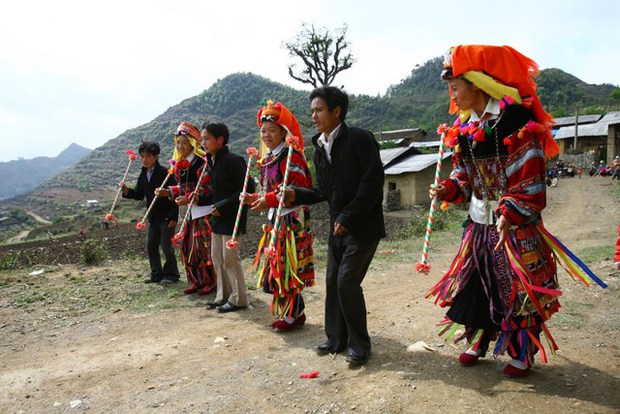
Girls and boys in Lo Lo Chai are performing a traditional dance.(Photos of National Newspaper)
Ha Giang’s outstanding community cultural tourist attraction
In the past few years, since Dong Van Karst Plateau was recognized by UNESCO as a Global Geopark in 2010, Lo Lo Chai villagers have gradually been redirected more to the business of tourism services. Partly to promote the image of the village to a large number of tourists, partly to create an additional source of income for the people.
The village has also been recognized as a Cultural Village and has been included in the program of the Traditional Cultural Village Conservation Project by the province.
According to Mr. Sinh Di Gai, a villager, shared on Ethnic Newspaper, starting in 2014, his family was the first household in the village to develop the idea of building a homestay for tourists. Up to now, this has become a stable source of income, averaging about 80 million VND/year.
Seeing Mr. Gai’s family succeed, many other households in the village also learn and follow to serve about 1000 visitors to the village every month.
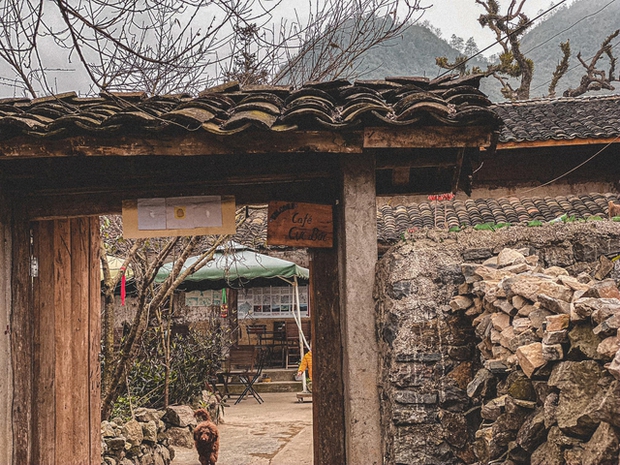
Kim Kim’s photo
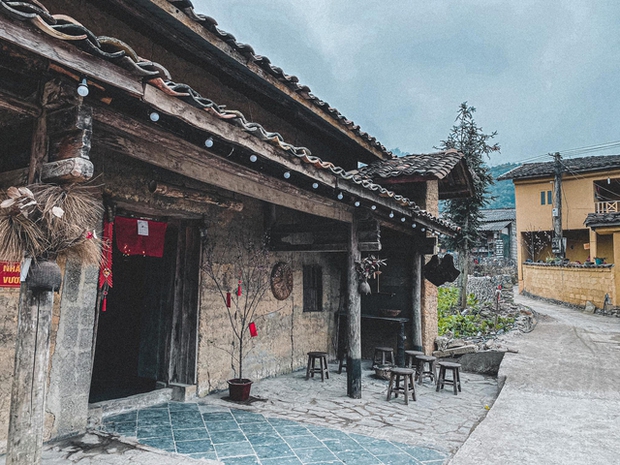
The traditional roofs are used by people to become cafes and homestays to serve tourists.(Kim Kim’s photo)
Coming to Lo Lo Chai, visitors will be warmly and sincerely welcomed. They will be invited to a cup of tea, a pipe tobacco, sitting slurping by a hot pot or men men, Thang Co, a cup of corn wine in the cold weather in the northernmost part of the country.
In addition to renting to wear traditional costumes, visitors can also buy them directly. The price is about a few million VND/set, there are sets of up to 15 million VND due to the sophisticated, meticulous and elaborate design and weaving.
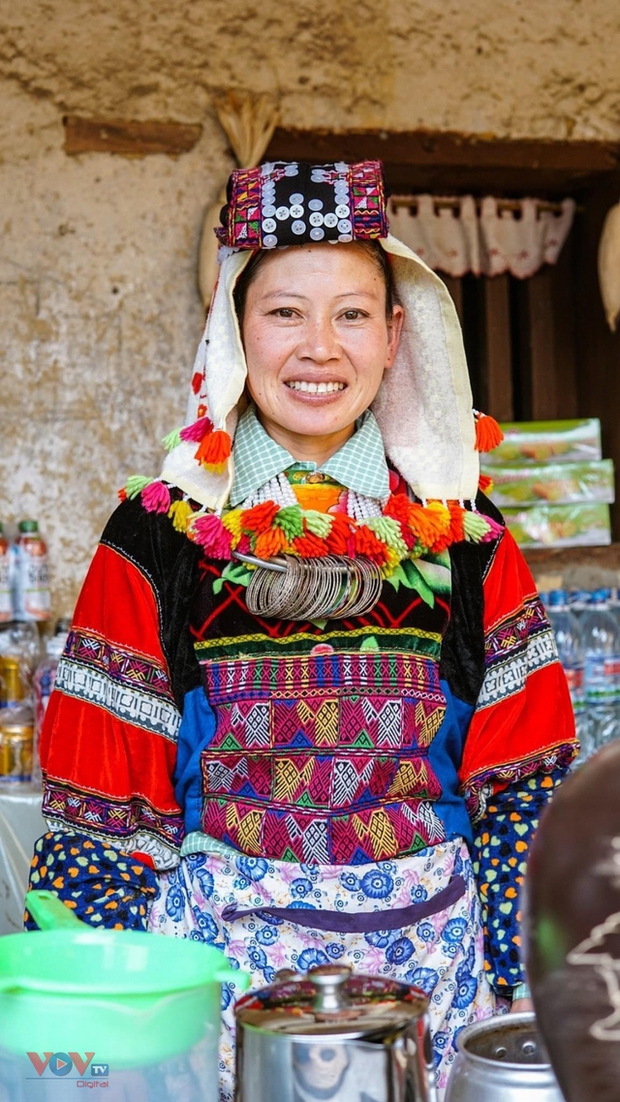
Visitors can rent or order costumes from locals in Lo Lo Chai.(Photo by VOV)
The most beautiful time of the year to travel to Ha Giang, having the opportunity to visit Lo Lo Chai village is at the end of this year. If you are planning a trip, why not try once to return to the northernmost tip of the country, to experience the unique traditional culture here?
Only 1km from the Lung Cu flagpole, there is a cultural village known as a fairy village in Ha Giang
vinlove.
Source: vinlove









